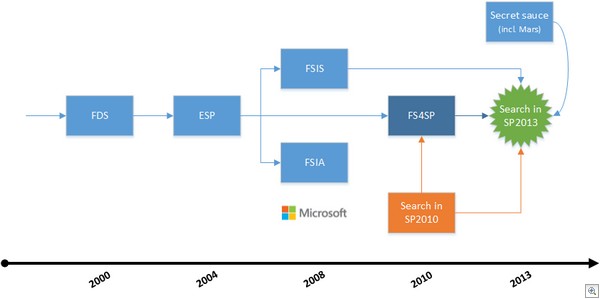Once upon a time, there was a company called FAST…
…that came out of nowhere, worked its way to the top, and then all of a sudden earlier this year disappeared for good. Time has come to say farewell.
In my previous blog post, Examining the new search core in SharePoint 2013, I attached a presentation on Slideshare. The first few slides summarized FAST’s product history, both before and after it was acquired by Microsoft. I also boldly stated that we’re seeing the “End of an era, the birth of a new age”. As cheesy as it may sound, at least from a technology perspective, I find this to be very true.
FAST Search and Transfer, the Norwegian company that sprung from the university in Trondheim, was founded as early as 1997. That’s a staggering 16 years ago. Even 4 years before the initial release of SharePoint.
Although it’s debatable when FAST initially entered the Enterprise Search market, the first release of FAST Data Search (FDS) was certainly a milestone. Much later, Microsoft acquired FAST and snapped up its hugely successful successor, the Enterprise Search Platform (ESP). It was later turned into the products FSIA/FSIS and also served as the backbone for FAST Search Server 2010 for SharePoint (FS4SP).
One thing that strikes me when reminiscing about FAST, is how the technology stack can be traced throughout its history. Many of the internal FAST processes we saw in FS4SP were actually already introduced back in FDS (of course in varying shape and form). But like I said in my last blog post, the idea that “FAST is now fully integrated” in SharePoint 2013 is just… well, wrong. The “technology trace” is now gone.
The figure below outlines FAST’s product history. As you can see, FS4SP was a merge between the FAST and the SharePoint worlds. And it showed. A Microsoft technician, who shall remain unnamed, once referred to it as the “bastard child of the two paradigms”. Although a little harsh – FS4SP was arguably a great improvement to the search-deprived SharePoint world – there was certainly some truth to it.
Eventually, with the arrival of SharePoint 2013, Microsoft released a well-tailored and cohesive search experience. But there was no longer an obvious technical inheritance from the earlier FAST product line, which is why SharePoint 2013 isn’t about having FAST “fully integrated”. It’s, simply put, a whole new platform. Of course with a few exceptions, e.g. some functionality from FSIS carried over to the new release. But generally speaking, we’re looking at a completely new platform, rewritten from the ground up.
In other words, the pre-MS technology is no longer around and the “technology trace” that we saw in earlier products is now cut off. Additionally, the “FAST” trademark has now slowly started the process of fading into obscurity.
All said and done, it’s only appropriate that FAST – the company, its technology and the trademark – is finally given a proper farewell. Without further ado, I give you its obituary: FAST, may you rest in peace, among friends in Enterprise Software heaven.

(Sorry, just couldn’t help but to shamelessly plug Comperio’s consulting services  )
)






